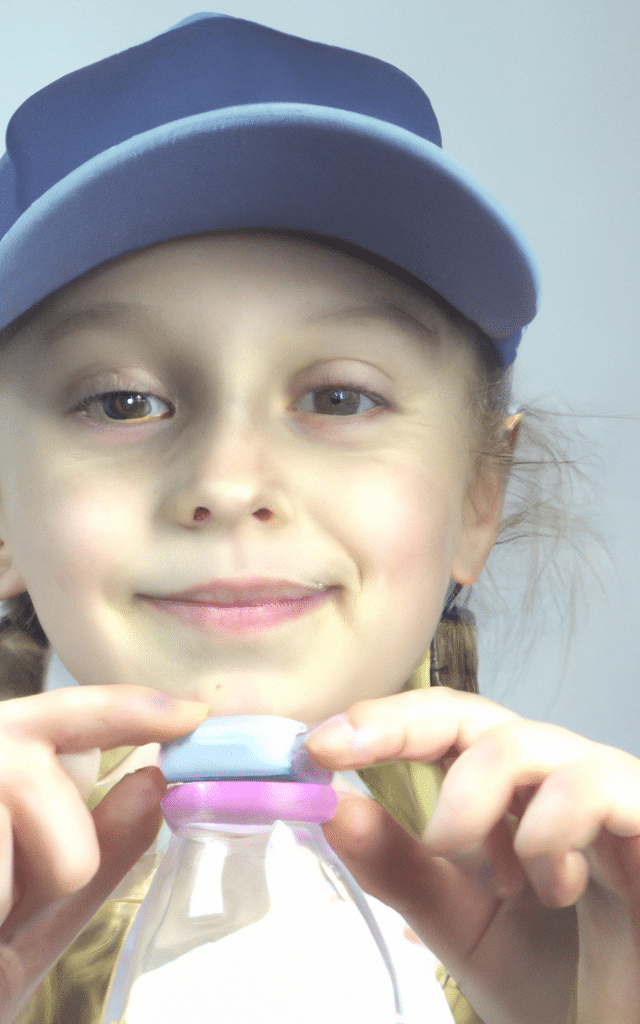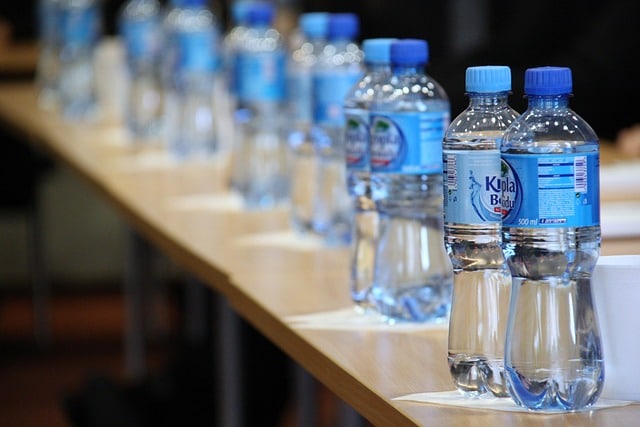Introduction – Recycling Plastic Bottle Caps
Every year, Americans throw away 2.5 million plastic bottle caps. Lined up side-by-side, that would reach 50 miles (80 km) . The good news is that yes, plastic bottle caps are recyclable.
In fact, most recycling plants are able to recycle bottle caps made of HDPE #2 plastic. However, bottle caps made of other materials such as PP #5 plastic are not always accepted by recycling plants.
This is due the property of the plastic itself and the ease by which its transformed into the end product of recycling (basically little pellets to be used for future products).

EPA – Plastic Bottle Caps Are 10th Most Recycled Item
The US Environmental Protection Agency (EPA) lists plastic bottle caps as the 10th most recycled item in the United States.
The EPA estimates that Americans recycle 35% of their plastic bottles. This means that Americans throw away 65% of their plastic bottles, which is about 2.5 million plastic bottles every year.
In the past recycling plants had trouble recycling bottle caps because they are so light they often fell through the sorting machines.
But new technology has made it possible for recycling plants to recycle bottle caps along with the bottles. Now the advice from recycling experts is to leave the bottle caps on the bottles when recycling them.
Different Recycling Centers Have Different Rules For Recycling Bottle Caps
As we implied, the answer is that plastic bottle caps are recyclable, but the wrinkle is that it will still depend on the recycling center. The reason is that different recycling plants have different machines for sorting recyclables.
Some machines can recycle bottle caps and some machines cannot. The best way to find out is to call your local recycling center and ask if they can recycle bottle caps.
Or, simpler, go to the website of the municipal waste authority and check whether they take a particular item. They will give instructions for example whether to throw it into the trash or to put in with other items for recycling.
HDPE and PP – Most Common Plastics Used In Bottle Caps
Relevant to whether the cap is recyclable is the type of plastic as we alluded to above. The most common type of plastic used in bottle caps is HDPE plastic (High-Density Polyethylene) or HDPE#5.
This is the same type of plastic used to make milk jugs, laundry detergent bottles, and some toys. HDPE is a very strong plastic that is not easily broken. It is also very stable, which means it does not break down easily in the environment.
HDPE is among the most recyclable. Where a waste center might not accept it is that HDPE is a light plastic and often falls through the sorting machines at recycling plants.
However, new technology has made it possible for some recycling plants to recycle HDPE along with the bottles.

The other type of plastic used in bottle caps is PP plastic (Polypropylene) or PP#5. PP is a light plastic that is often used to make yogurt containers, margarine tubs, and some medical containers.
PP is difficult to recycle because it has a higher melting point. Again you will need to check with your particular recycling center.
Summary Of Bottle Cap Plastic Recylability
| Plastic Type | Recyclable | Advantages | Disadvantages |
|---|---|---|---|
| HDPE #2 | Yes | Used in bottle caps, milk jugs, laundry detergent bottles, and toys. Very recyclable. | Light weight causes a fall through sorting machines at recycling plants. |
| PP #5 | Variable | Used in bottle caps, yogurt containers, margarine tubs, and medical containers. | High melting point makes it more difficult to recycle. Not all recycling centers can do it. |
| Other Plastics | Variable | Highly recyclable and valued for durability and safety. LDPE is used for caps on squeezable bottles. | LDPE has less lower market demand. PS is used in medicine bottle caps. |
Leave Plastic Bottle Caps On The Bottle
One of the most common questions about recycling is whether or not the plastic bottle caps should be removed before recycling the bottles. In the past often they were removed but now the advice has changed which is confusing to a lot of people.
Recycling Rate For Plastic bottles Increased Over Last 30 Years
The recycling rate for plastic bottles has increased over the years. In 1990, the recycling rate was only 9%. In 2000, the recycling rate increased to 28%.
And in 2018, the recycling rate increased to 35%. The increase in the recycling rate is due to changes in technology and changes in the way recycling plants sort recyclables.
Manufacturers have also started to use more recycled plastic in their products. For example, recycled plastic is often used to make carpeting, clothing, and toys.
Alternatives To Recycling
If your recycling center does not accept plastic bottle caps, there are some other options. One option is to recycle the caps at a store that has a recycling program for plastic caps.
For example, some stores will recycle plastic caps from water bottles, soda bottles, and laundry detergent bottles. Another option is to “upcycle” the caps.
For example, you can use caps to make a bird feeder or a keychain. Or you can donate the caps to a school or a daycare center for use in arts and crafts projects.
Take a look at our site for other ideas in upcycling old items.
Other Types Of Plastic
There are other types of plastic used less frequently. PET (Polyethylene Terephthalate) is often found in soda and water bottle caps.
‘Despite being less common, PET’s recyclability is generally high and it’s a favored material due to its durability and safety.
LDPE (Low-Density Polyethylene) is another type utilized in certain bottle caps, specifically those designed for squeezable bottles, such as mustard or honey containers. LDPE is recyclable but often less accepted in curbside programs due to lower demand in the recycled plastics market.
Polystyrene (PS), despite being commonly associated with disposable foam products, is also used in some medicine bottle caps. PS recycling, however, is less common due to difficulties in the recycling process, often leading to these items ending up in landfills.
Metal Bottle Caps – Brief Digression
It is important to note that there is a difference between plastic bottle caps and metal bottle caps.
Metal bottle caps, such as those from soda bottles, beer bottles, and wine bottles, need to be separated from the glass bottles before recycling.
This is because the recycling process for glass is different from the recycling process for plastic.
China – New Policy In 2018 Banned Foreign Waste
Since the year 2018, China has refused to process American recycling. The reason is that China does not want to be the world’s garbage dump.
As a result, American recycling plants have had to find other ways to process recyclables. One way is to incinerate the recyclables.
This is not a good option because it creates air pollution. Another way is to send the recyclables to landfills.
This is also not a good option because it leads to contamination and landfill emissions.
The best option is to recycle the recyclables. However, this is not always possible for example, some plastics are difficult to recycle as we noted above for PP plastic (Polypropylene).
Conclusion
Plastic bottle caps are recyclable, but it depends on the recycling center. The reason is that different recycling plants have different machines for sorting recyclables.
Some machines can recycle bottle caps and some machines cannot. The best way to find out is to call your local recycling center and ask if they can recycle bottle caps.
In addition, check to see if your municipality has any specific instructions on how to recycle bottle caps.
